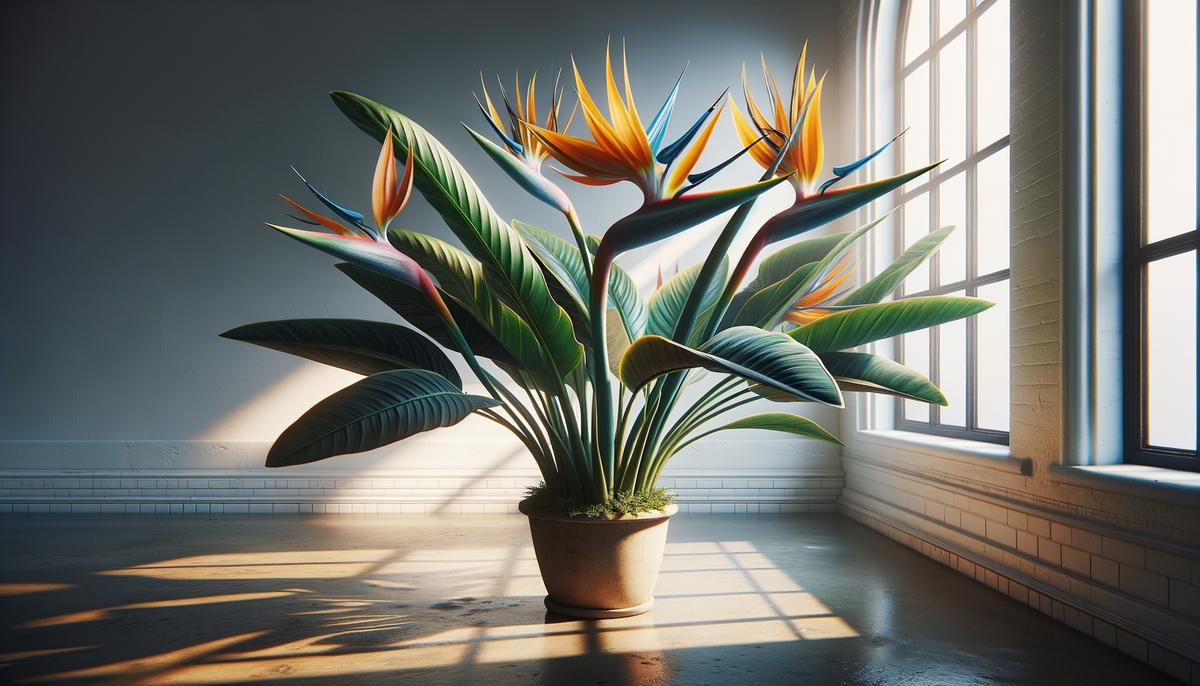Bird of Paradise Leaves Curling Inward? 🌿 Natural Remedies

Assessing Environmental Factors
Providing the right lighting for a Bird of Paradise is crucial. Bright, indirect light works best, mimicking its native South African climate without overwhelming the plant. Too much direct sunlight can stress the plant, leading to crispy, curled leaves. Conversely, insufficient light can also cause leaf curling.
Positioning your Bird of Paradise near a window with a sheer curtain can provide the ideal balance of cozy warmth and gentle light. Timing and intensity of light exposure also play a role in maintaining a healthy plant.
Temperature is another important factor. Bird of Paradise plants thrive in temperatures between 65-85˚F. Temperatures below 65˚F or above 85˚F can cause leaf curling as the plant tries to cope with the stress.
Creating the ideal environment for your Bird of Paradise involves observing how it reacts to its surroundings. Pay attention to whether the leaves are reaching out for more light or curling inward to avoid sunburn. Adjustments may be necessary as seasons change.
With patience, care, and attention to detail, you can nurture a thriving Bird of Paradise that adds a touch of tropical beauty to your home.

Perfecting Watering and Humidity
Proper watering and humidity are essential for a healthy Bird of Paradise. Inconsistent watering and low humidity can lead to leaf curling, signaling distress.
To maintain ideal soil moisture, use a soil moisture meter to determine when the top few inches of soil have dried out enough to water. Deep, thorough watering encourages extensive root growth and ensures even moisture distribution. Allow excess water to drain freely to avoid soggy conditions that could lead to root rot.
Bird of Paradise plants originate from environments with high humidity. You can create a similar environment by:
- Placing pebble trays filled with water underneath the pot
- Using a humidifier nearby
- Grouping your Bird of Paradise with other plants to create a microclimate that sustains humidity through shared transpiration
Pay attention to your plant’s signals. Curling leaves indicate a need to reassess your watering and humidity strategies. With understanding and adaptability, you can cultivate a vibrant Bird of Paradise that thrives in your living space.
Preventing Pests and Diseases
Preventing pests and diseases is crucial for maintaining a healthy Bird of Paradise. Regular inspections, knowledge of common pests, and the use of organic control methods can help keep your plant thriving.
Inspect your plant closely during watering, looking for signs of pests like spider mites, thrips, and mealybugs. Early detection makes management easier without resorting to harsh chemicals.
When dealing with pests, start with the least invasive methods:
- Neem oil, an organic pesticide, is effective against a broad range of pests without harming beneficial insects.
- For mealybugs and larger insects, dabbing each with a cotton swab soaked in rubbing alcohol can eliminate them.
- Insecticidal soaps offer a safe solution when used according to directions.
Proper drainage and a consistent watering schedule can prevent diseases like root rot and leaf spot. Remove dead or dying foliage promptly to avoid attracting pests and harboring disease. Clean leaves not only enhance your plant’s appearance but also promote better health and growth.
Keeping your plant’s environment clean and understanding its needs can create a nurturing environment that’s naturally resistant to common problems. With diligent preventive measures and gentle care, your Bird of Paradise can remain a resplendent treasure in your home.
REFERENCE
- Broschat TK, Meerow AW. Ornamental palm horticulture. Gainesville: University Press of Florida; 2000.
- Chase AR, Broschat TK, eds. Diseases and disorders of ornamental palms. St. Paul: APS Press; 1991.
- Meerow AW. Betrock’s guide to landscape palms. Hollywood: Betrock Information Systems; 1992.
